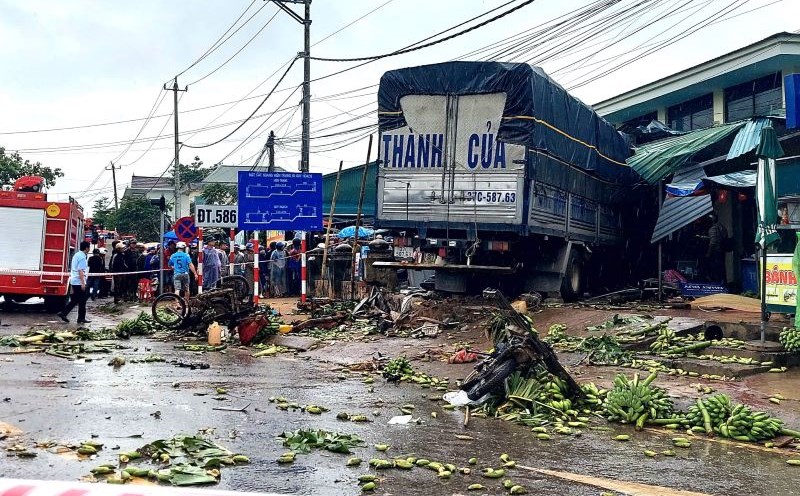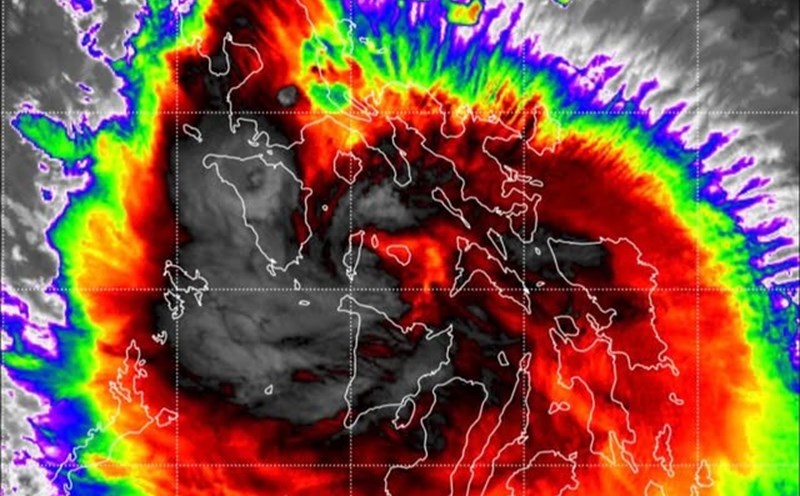The Ministry of Agriculture and Environment has just issued a telegram on proactively responding to storm No. 10. The dispatch sent to the People's Committees of coastal provinces and cities from Quang Ninh to Khanh Hoa and relevant ministries and branches clearly stated:
Currently, storm No. 10 has entered the East Sea, the strongest wind near the storm center is level 11, gusting to level 14 and is likely to strengthen. This is a storm that moves very quickly at about 35km/h (2 times the speed of normal storms), the storm is very strong, has a wide range of influence, and can cause combined impacts of many types of natural disasters such as strong winds, heavy rain, floods, flash floods, landslides and coastal flooding; The storm circulation caused heavy rain in the North and North Central regions is generally from 200-400mm, locally over 600mm, and is an area that has been severely damaged by storms No. 3, No. 5 and floods in the recent past.
To proactively respond to storms and floods after storms, avoid subjective thinking right after responding to storm No. 9, the National Civil Defense Steering Committee recommends that ministries, branches and People's Committees of coastal provinces and cities from Quang Ninh to Khanh Hoa direct strongly, early and from afar to minimize damage to people and property:
1. For the sea route:
- Closely monitor the development of the storm; strictly manage vehicles going out to sea; organize counting, notify owners of vehicles, captains of ships and boats operating at sea of the location, direction of movement and developments of the storm (very fast speed and very strong intensity) to proactively avoid, escape, do not move into dangerous areas or return to safe shelters. Dangerous area in the next 24 hours: From latitude 11.5-17.0N; east of longitude 112.0E (dangerous area adjusted in forecast bulletins);
- Deploy the work of ensuring the safety of people, vehicles, and property, especially for tourist destinations, aquaculture, fishing, seafood, and works at sea, on islands, and coastal areas;
- Based on specific situations, proactively decide to ban fishing vessels, transport vessels, and tourist vessels from the sea, in which it is noted to ban the time of banishing the sea earlier than previous storms and relocate people in cages and hutts for aquaculture along the coast, at sea, and on islands to ensure safety;
- Prepare forces and means for rescue when required.
2. For on land:
- Organize tree pruning, tenon braces, and reinforce houses; be ready with measures to ensure safety, limit damage to warehouses, headquarters, public works, industrial parks, mines, mineral exploitation, factories, power grid systems, and telecommunications; take measures to quickly fix traffic, electricity and telecommunications incidents, ensure maintaining operations in all situations, without interruption before, during and after the storm;
- Organize the evacuation of households in dangerous areas, especially coastal areas, low-lying areas, areas at high risk of landslides, flash floods, and deep flooding to safe places; have plans to support temporary accommodation, food, and necessities for people to evacuate, ensuring stable lives for people; prepare forces, equipment, and necessities according to the "four on-site" motto to be ready to respond to all situations, especially for areas at risk of being isolated, areas that have been severely damaged by natural disasters in the past;
- Urgently review plans to ensure the safety of dike works under construction, vulnerable points and dike protection plans to prevent storms and floods in the area according to the "4 on-site" motto;
- Localities in key areas affected by storms and floods have plans and decisions to let students stay home from school, let workers in industrial parks and enterprises stay home from work during the storm;
- Urgently mobilize agricultural harvesting forces with the motto "greener at home than in the fields";
- Organize remote traffic flow, limit people on the streets during storms and heavy floods; be ready to deploy guards, control people and vehicles in areas at risk of deep flooding and landslides; arrange forces, materials, and means to overcome incidents, ensure smooth traffic on main traffic routes when heavy rain occurs;
- Inspect and review vulnerable works, unfinished works, small reservoirs that have been filled with water due to heavy rain in the area in the recent past; direct lake owners and relevant agencies to urgently operate the release of water to reserve flood capacity according to regulations, especially in key provinces expected to have storms from Thanh Hoa to Ha Tinh; organize regular operations and be ready to regulate to ensure safety of works and downstream;
- Prepare plans to ensure drainage and prevent flooding for agricultural production areas; deploy forces and means to drain water to buffer water, clear bottlenecks, and flood drainage obstructions, be ready to operate drainage systems for industrial parks, urban areas, and residential areas, and at the same time inform and instruct people to raise furniture, prepare food and essential supplies to cope with storms and floods to minimize damage.











